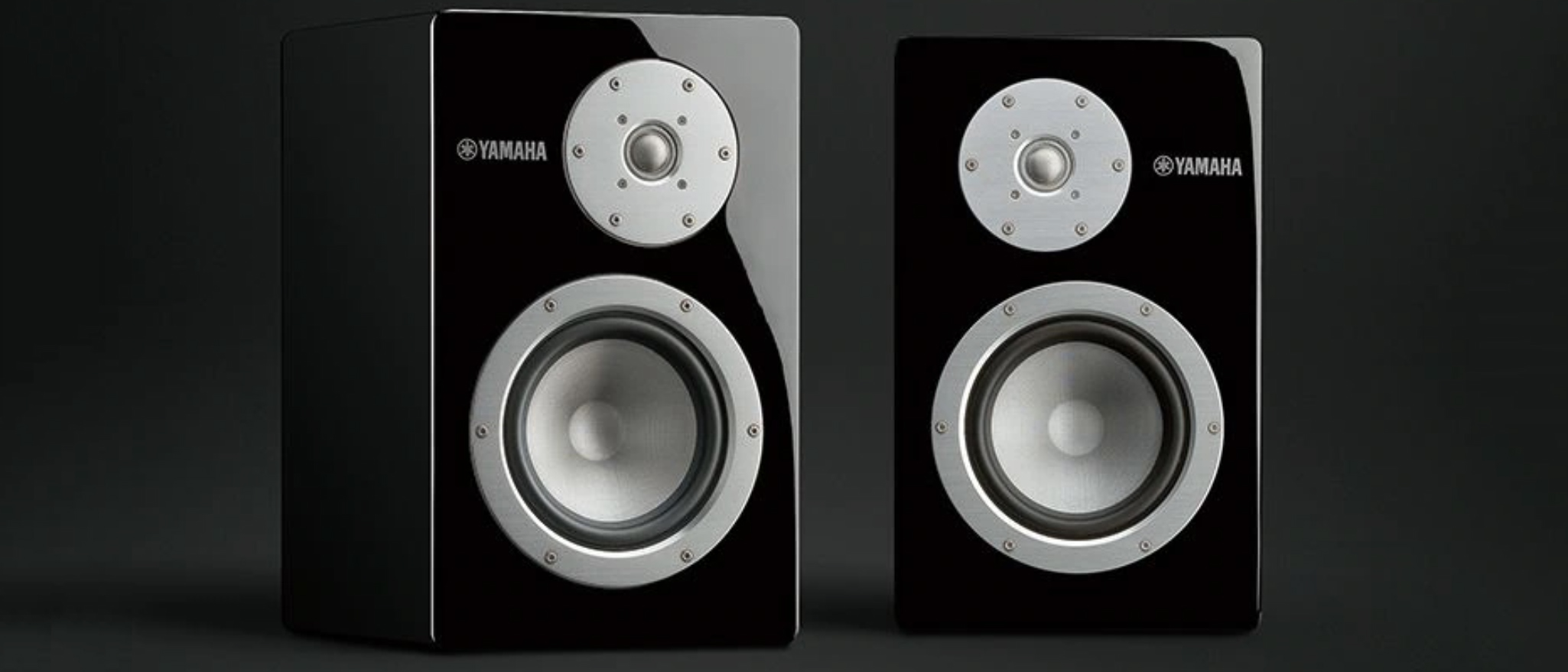What Hi-Fi? Verdict
Yamaha is the only Japanese company that's world famous for the quality of its loudspeakers. The NS-3000 shows why, with impressive handling of the entire frequency spectrum – clean treble, intimate midrange and solid bass.
Pros
- +
Clean nuanced treble
- +
Intimate midrange
- +
Surprisingly solid bass
Cons
- -
Ultimate bass depth limited
- -
Stands are too expensive
Why you can trust What Hi-Fi?
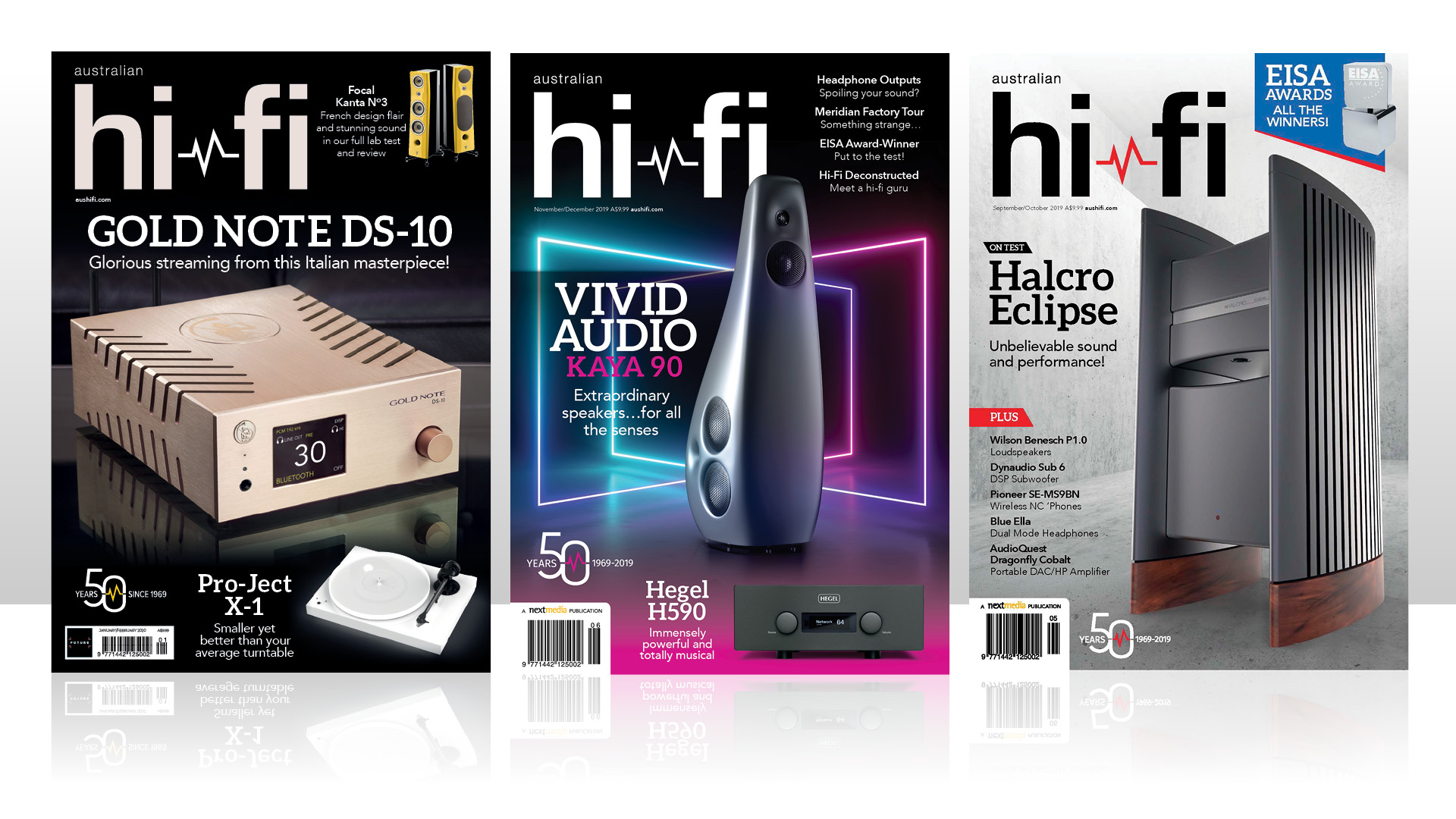
This review and test originally appeared in Australian Hi-Fi magazine, one of What Hi-Fi?’s sister titles from Down Under. Click here for more information about Australian Hi-Fi, including links to buy individual digital editions and details on how best to subscribe.
The very first loudspeakers designed and built by Yamaha back in the 1950s were for use in the company’s range of electronic organs, which it named Electone and promoted as having a sound the same as that of the conventional organs they replaced – in other words, a ‘natural sound.’ And this ‘natural sound’ slogan has continued to this day in the model numbers of all Yamaha loudspeakers – NS.
The most famous of Yamaha’s speaker designs over the years was undoubtedly the NS-1000, introduced in 1974. It was the first loudspeaker in the world to use beryllium diaphragms, and was available both as a professional studio monitor (NS-1000M) and a home speaker, where it was also the first loudspeaker to have a gloss black cabinet finish.
Yamaha’s current flagship domestic speaker, the NS-5000, shares much of the DNA of the original NS-1000, retaining the three-way three-driver bass-reflex configuration in a cabinet of almost the same physical dimensions, and in a similar finish.
But among audio professionals the most famous Yamaha speaker was the NS-10 and its M variants, so popular with recording engineers that at one point it could be fairly said that almost every single recording studio in the world owned at least one pair. The Yamaha NS-10M was a two-way two-driver infinite-baffle design that used a 180mm bass/midrange driver and a 35mm soft-dome tweeter in a 10.4 litre enclosure.
Which brings us to Yamaha’s latest home speaker, the NS-3000, which is a two-way two-driver bass-reflex design that uses a 190mm bass/midrange driver and a 30mm soft-dome tweeter in a 28.4 litre enclosure.
Zylon invasion
While a number of speaker manufacturers have cottoned on to the use of beryllium in the decades since the original release of the NS-1000, Yamaha is now eschewing it. Beryllium is a hazardous raw material, its dust is toxic (it even has its own chronic life-threatening allergic disease, berylliosis), and the sources for worked beryllium are consequently extremely limited.
Instead Yamaha has turned to Zylon, which currently holds the world record
as being the world’s strongest artificial fibre, with a cross-sectional strength that outperforms both steel and carbon-fibre. In terms of weight Zylon is actually lighter than beryllium, with a density of 1.55g/cm³ compared with beryllium’s 1.8g/cm³. In fact it’s so strong that Zylon cord is used instead of stainless steel rigging on modern racing yachts, in order to save weight.
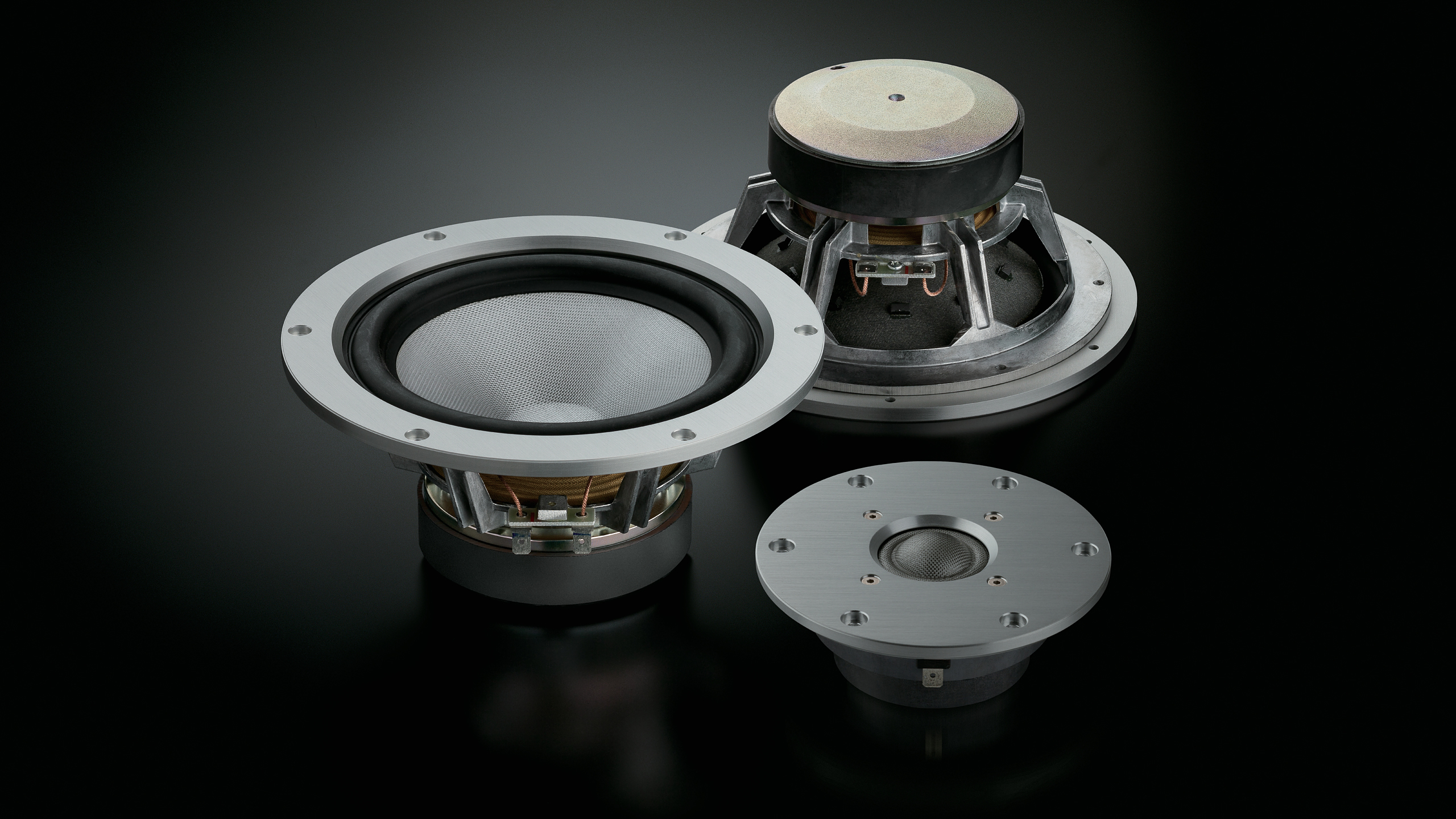
In the NS-3000 it’s used for the dome and cone as a weave that’s made of a composite of carbon and glass fibres. Yamaha says that “Zylon drivers boast a sound velocity comparable to beryllium yet possessing the characteristic softness of textiles.”
Zylon can be adversely affected by both ultraviolet and visible light, so Yamaha coats its Zylon domes and cones with an aerospace alloy containing nickel, copper and iron, one of whose brand names is Monel.
In the NS-3000 the Zylon dome tweeter measures 25mm, or 30mm if you include the dome’s suspension. The entire unit sits in the exact centre of a machined aluminium face-plate, and is backed by a resonance suppression chamber which controls
back-waves from the dome using multiple tubes of differing lengths, aiming to achieve the same kind of resonance suppression as attempted by Bowers & Wilkins Nautilus tapering tube or KEF’s MAT disc (see last issue).
The Yamaha NS-3000’s bass/midrange driver is also formed from Zylon and although it looks dish-shaped in photographs, you’ll find that in the flesh it’s actually flared, with a recessed central dust-cap that’s also made of Zylon. The driver measures 190mm diameter overall, with a moving diameter (cone plus roll surround) of 145mm and a cone diameter of 115mm, though Yamaha’s specifications curiously list this as a 160mm driver.
Here the resonances are addressed by an ‘acoustic absorber’ in the cabinet, a small U-shaped rectangular tube filled with acoustic wadding, which Yamaha says “cancels the standing waves by use of internal resonance,” perhaps by acting as a Helmholtz resonator tuned to the frequency which Yamaha’s engineers wish to cancel.
Caps and ports
As you’d expect in a two-way design, the crossover network employed in the Yamaha NS-3000 is relatively simple, but the parts used for it are top quality. Witness the Mcap Supreme Evo capacitor, made by Germany’s Mundorf, and also one of the largest inductors we’ve ever seen on a small two-way design – larger even than the one used by the British Broadcasting Corporation’s engineering department for
its famous LS3/5A broadcast monitor design. Yamaha specifies the crossover frequency between the two drivers as 2.8kHz.
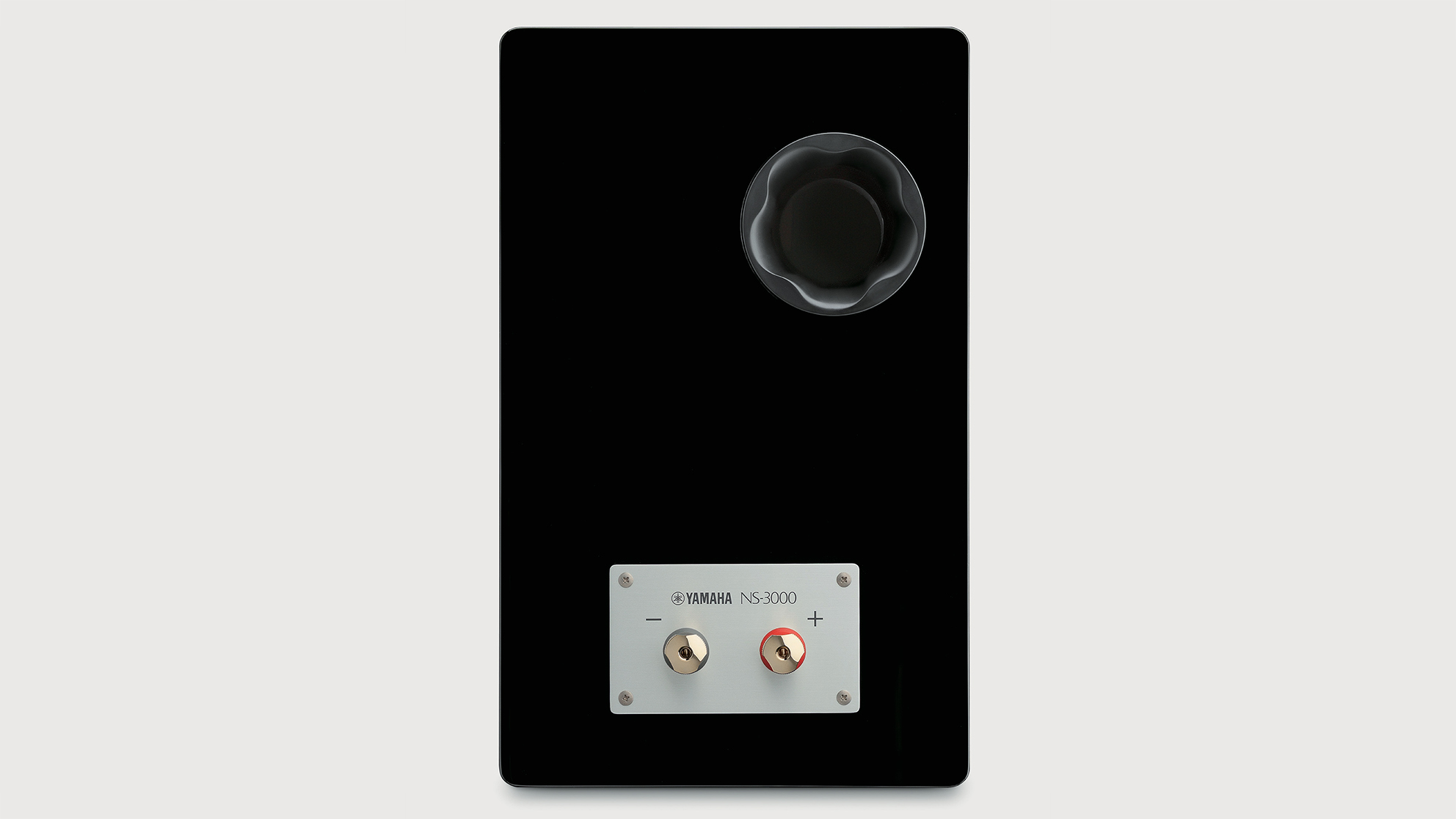
The speaker terminals are similarly well-specified, made by Yamaha not a third party, sculpted from solid brass and fitted to a very tasteful solid alloy plate that simply bears the Yamaha logo, the Yamaha name and the model number of the speaker – NS-3000.
The rear-firing bass reflex port has a curiously-moulded exit ‘horn’ fashioned from black plastic and shaped a bit like the petals of a flower (see image opposite), presumably to improve air flow in and out of the port to reduce the possibility of chuffing, or ‘port noise’. The 55mm-diameter port itself is made from pressed paper.
As with many modern bass reflex designs, Yamaha supplies multi-stage foam plugs that can be used to partially or completely block the output from the port. In theory these can ‘improve’ the sound if you put the speakers in a sonically unfavourable position in your listening room. In practice you’re invariably better off moving your speakers somewhere more sonically favourable.
While pictures of the Yamaha NS-3000s often show them on their dedicated SPS-3000 stands, the stands are optional and cost AU$1999 (about £1230) a pair extra. They have vibration-isolating feet, a base made from two metal plates that sandwich a vibration-absorbing wood chip/rubber mixture, then wood (MDF) risers and a 6mm metal plate at the top.
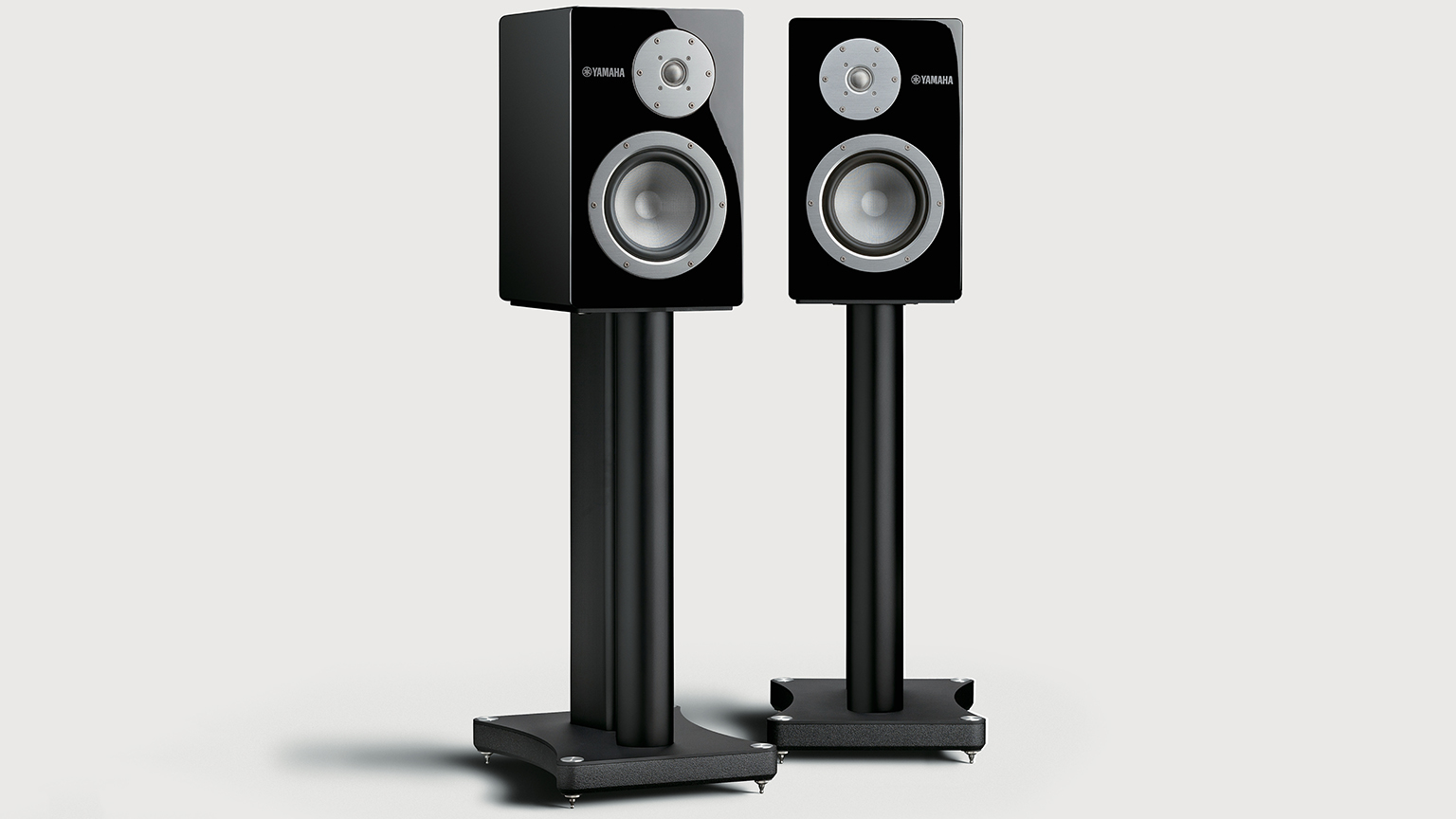
Yamaha has strongly promoted the 10-year warranty terms of its flagship NS-5000 speakers, and justifiably so. While the less-costly NS-3000s instead attract the industry-standard warranty of five years, Yamaha Music Australia says that if you register your purchase of the NS-3000s on its website, it will offer an additional five years, for the same total of 10 years.
Considering that all the elements in the NS-3000 are built to the same standard as those in the NS-5000, and use mostly identical materials, 10 years of trouble-free life would certainly seem likely.
Performance
Don’t go looking in the packaging of the NS-3000s for a pair of speaker grilles: there are none, even as optional extras. Yamaha is clearly proud of the naked look. This also ensures you take notice of the offset tweeters – these are ‘mirror-imaged’ pairs, which increases the positioning options, adjusting the stereo image by having the tweeters on the ‘outsides’ of the cabinets if the speakers are fairly close together, or on the ‘insides’ if the speakers are more widely separated.
We ran them in for 48 hours continuously using a pink noise test signal to settle the suspensions and form the capacitors, but even after that the sound seemed to be improving while we listened with music, so we put them back out of phase and face-to-face for a further 48 hours of burn in… only to find the same thing happening even after that: the sound kept improving the longer we listened.
This longer run-in time than usual may be down to the construction of the drivers, or the cone material; just make sure if you are auditioning these speakers that you listen to a pair that’s been completely run in!
Running in speakers facing each other and out of phase not only quietens the blast of pink noise, it gives an indication of the quality of pair matching, and of the accuracy of the drivers and crossover network. The almost total cancellation we heard when running in the NS-3000s in this way was proof positive of the excellence of Yamaha’s driver-matching and the quality control achieved during manufacture.
We sat the Yamaha NS-3000s on our own stands, 30 centimetres from the rear wall, and without their ports obstructed by the foam plugs. This resulted in an excellent balance between the bass, mids and highs.
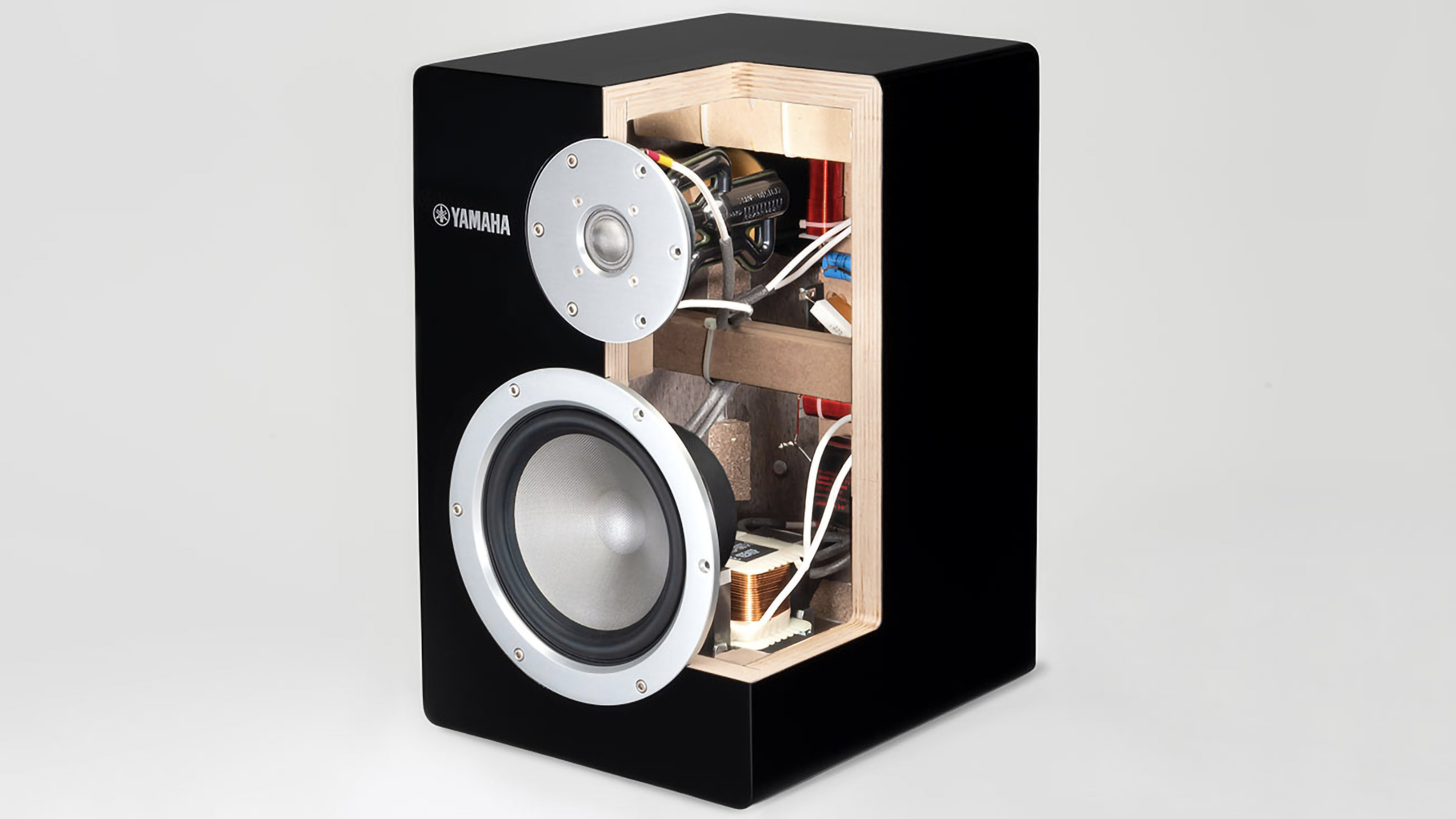
One thing few small speakers do very well is handle amplifier power. As you turn up the volume, their sound tends to become more congested as the dynamics compress. This is not the case with the NS-3000s at all. They respond beautifully to clockwise movements of the volume control, becoming livelier and more dynamic as you increase the volume – quite the opposite of what usually happens.
You do eventually reach a limit, of course, but we were amazed by how loudly we could play them. The extreme treble of the NS-3000s, a little forward at normal volumes, does become a little more obvious at these higher volumes, but we could ameliorate both those traits by facing the speakers directly up the room, so we were listening a little off-axis.
Also the treble softens a little after 20 or 30 minutes of listening at high volume, presumably as a result of the tweeter’s voice-coil heating up and its impedance increasing slightly as a result.
That said, the NS-3000’s high-frequency sound is beautifully clean and nuanced. A crisp impactful strike transient on a hi-hat was followed by a ride that had no tinny-ness whatsoever, just a beautifully true ring, finished with a lovely sizzling cut-off. Crash cymbal sonics were equally good, and perfectly imaged by the Yamahas.
As for the midrange, just listen to Mount Eerie (Phil Elverum) on his album A Crow Looked At Me. If you can get over the tragic lyric of every single song on this album (written shortly after the death of his wife, Canadian cartoonist and musician Geneviève Castrée, of pancreatic cancer, aged 35) you’ll be able to marvel at the intimacy with which the Yamaha NS-3000s deliver his tribute to her.
The speakers position his voice perfectly wherever he is in the room (and he moves around a bit!) and deliver the tonality of his voice with true-to-life accuracy (particularly in My Chasm). Then, on When I Take Out The Garbage at Night, the acoustic guitar seems right there in the room with you.
Listen to the string scrapes, to the microphone rustles, to the plaintive sparse piano. It’s a rough recording, and you can hear all the mistakes when listening via the NS-3000s – they’re revealing speakers, and they don’t pull any punches. You’re with him there, in the room in which she died, as he plays the instruments she left behind, and the Yamaha NS-3000s transmit all that raw emotion viscerally.

The sparse piano on A Crow Looked At Me prompted us to play Lorde’s Melodrama from 2017. Green Light, which kicks off the album, starts a little Eerie-ly, but soon bursts into a totally full soundfield. The deep bass on this album is vital to the overall effect, and we were impressed by how well the NS-3000s handled the arrival of the beat at 0:49.
These are small speakers but this track was the first of many that proved how these little speakers punch well above their weight in the bass department, both for extension and in the feeling of weight they can attach to kick drums, bass guitars and other low-pitched instruments.
On the next track, Sober, you can also hear the accuracy of Yamaha’s left/right speaker matching by listening to the tone of the backing vocals, remaining absolutely identical as they alternate between left and right channels. The sweetness of the sibilances on the word ‘sober’ is enchantingly delivered by the NS-5000s.
With Liability, further into the album, we’ve heard few speakers deliver this track as well as the Yamaha NS-3000s; indeed this became a go-to track to demonstrate to visitors not only the success of these speakers but the whole point of having a high-fidelity audio system.
It’s packed with delights – Lorde’s ‘go for it’, the unsweetened count-in for the piano, the fullness and richness of the piano sound itself, the finger-scrapes on the guitar strings, and Lorde’s stage-centred voice first strong and powerful with no FX, then little-girl, then with added FX and echo.
The very deepest bass is perhaps not an overly strong region for the NS-3000s, though if you’re prepared to sacrifice a little stage depth you’ll be surprised at how much more bass they can muster if you move them closer to a wall. Alternatively it’s nothing a subwoofer couldn’t fix.
Or this might argue for positioning them on a bookshelf or a side table rather than a pair of stands – not to mention that you’ll save yourself a few thousand dollars on the stands into the bargain.
Final verdict
There are two other famous Japanese loudspeaker manufacturers – TAD and
TOA – but few people outside of Japan have heard of them and both of them operate almost exclusively in the commercial sphere, so they’re not exactly household names. Which leaves Yamaha as the only Japanese company that is world-famous for the quality of its loudspeakers. The NS-3000s show why, and we loved them.
